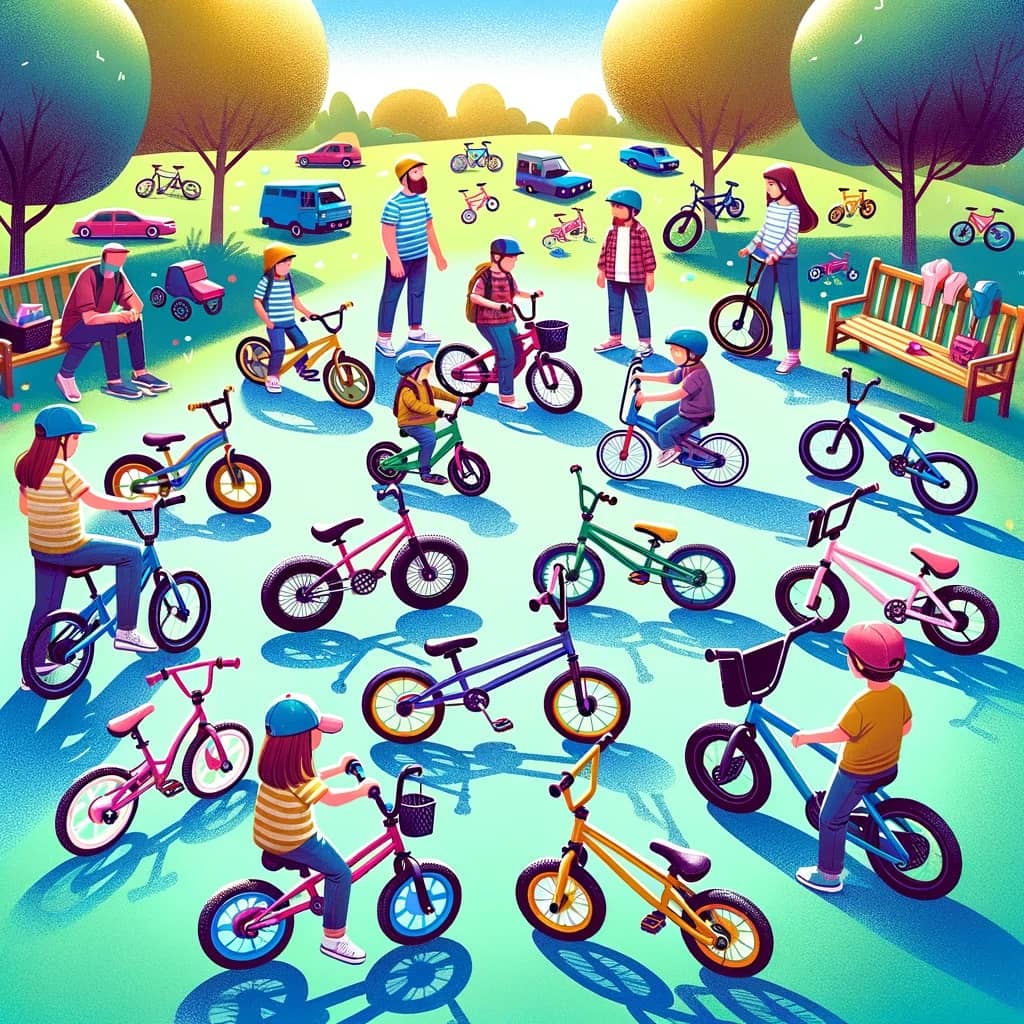Choosing the right bike for a child is crucial for fostering a love of cycling and ensuring their safety and comfort. Here are key considerations and steps to guide you through selecting the best kids’ bike:
1. Consider the Child’s Age and Ability
- Age Appropriateness: Bikes for kids are designed with specific age ranges in mind, which take into account the average height, weight, and coordination skills of children within those ranges.
- Riding Ability: Beginners might do better with a balance bike, which helps develop a sense of balance and control before transitioning to pedal bikes.
2. Size Matters
- Height and Inseam: The most important factor in choosing a bike is the size. The child should be able to sit on the saddle and touch the ground with the balls of both feet to ensure stability.
- Size Charts: Use manufacturer’s size charts that match children’s height and inseam measurements to the right bike size.
3. Look for Adjustable Features
- Adjustable Seat and Handlebars: Choosing a bike with an adjustable seat and handlebars can allow the bike to grow with your child, offering better longevity and comfort.
4. Prioritize Safety Features
- Brakes: Ensure the bike has an appropriate braking system. Younger children might benefit from coaster brakes (back-pedal brakes), while older kids can handle hand brakes.
- Reflectors and Lights: If the child will be riding in low-light conditions, look for bikes with built-in reflectors and consider adding lights.
5. Consider Weight
- Lightweight Frame: A lightweight bike is easier for a child to control and handle, making for a more enjoyable riding experience. Look for bikes made from aluminum or other lightweight materials.
6. Think about Durability and Resale Value
- Quality Construction: A well-made bike might be more expensive initially but can withstand rough handling and can be passed down to siblings or sold when outgrown.
- Brand Reputation: Research brands known for durability and good resale value.
7. Types of Bikes
- Balance Bikes: No pedals, designed to teach balance.
- Pedal Bikes: Traditional bicycles, available in various sizes.
- BMX and Mountain Bikes: For kids interested in specific types of cycling, such as off-road or trick biking.
8. Test Rides Are Important
- Fit and Comfort: If possible, have your child test ride the bike to ensure it feels comfortable and they can handle it confidently.
- Shop Visit: Visiting a local bike shop can also provide valuable advice and fitting services.
9. Accessories and Customizations
- Helmets: Safety first. Ensure you purchase a correctly fitting helmet.
- Decorations and Add-ons: Allow your child to personalize their bike with stickers, bells, baskets, or lights to make it more exciting and encouraging for them to ride.
10. Maintenance and Upkeep
- Regular Checks: Teach your child the importance of regular maintenance, such as checking tire pressure and brakes.
- Professional Services: Consider getting the bike serviced annually by a professional to maintain its safety and longevity.
By keeping these considerations in mind, you can choose a bike that not only fits your child’s current needs but also encourages a positive and lasting relationship with cycling. Remember, the best bike for your child is one that they feel comfortable and confident riding.
